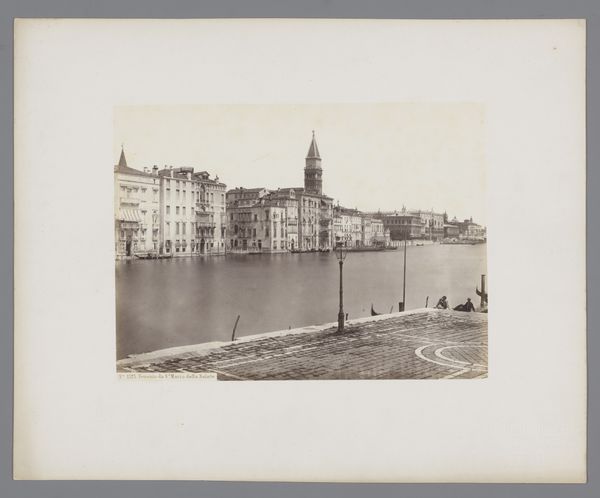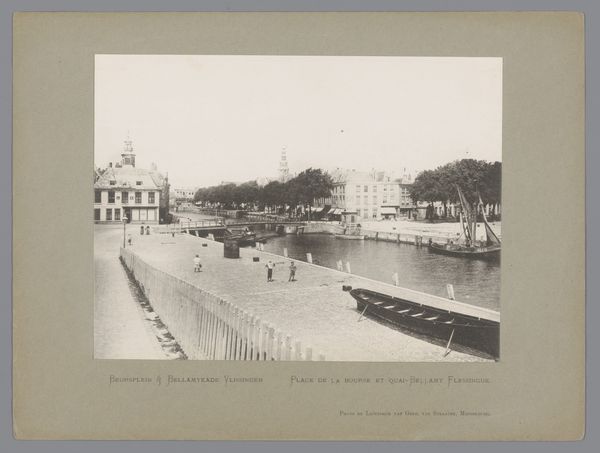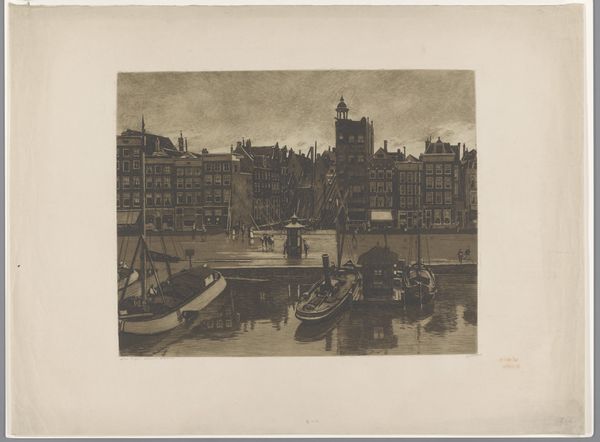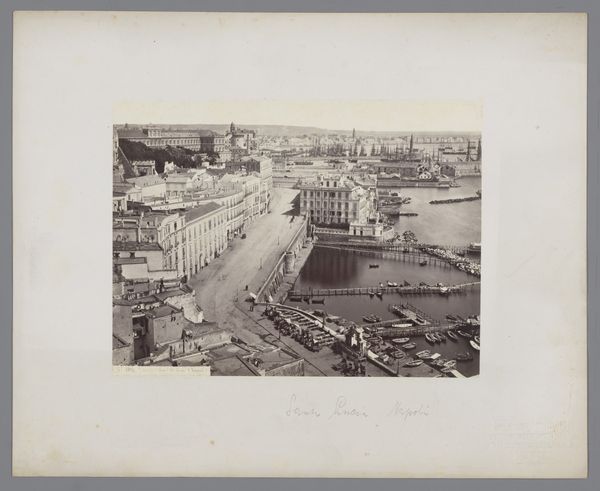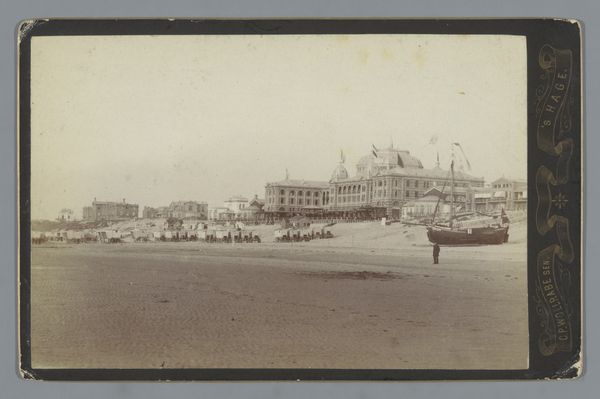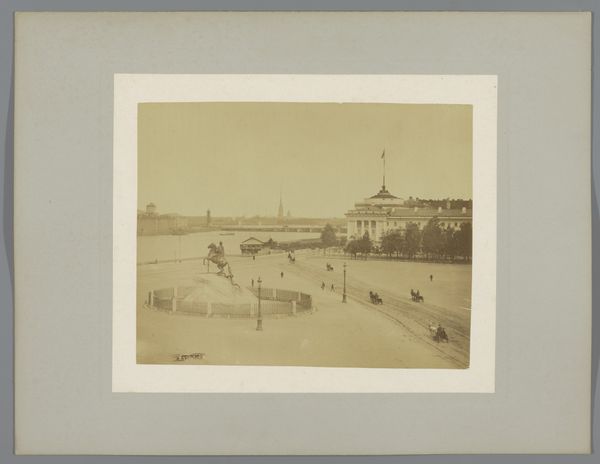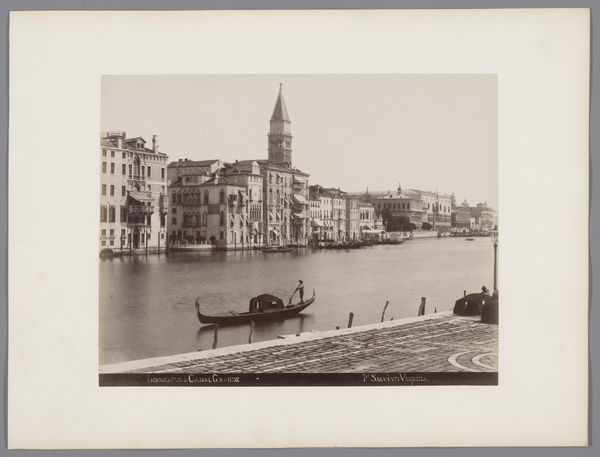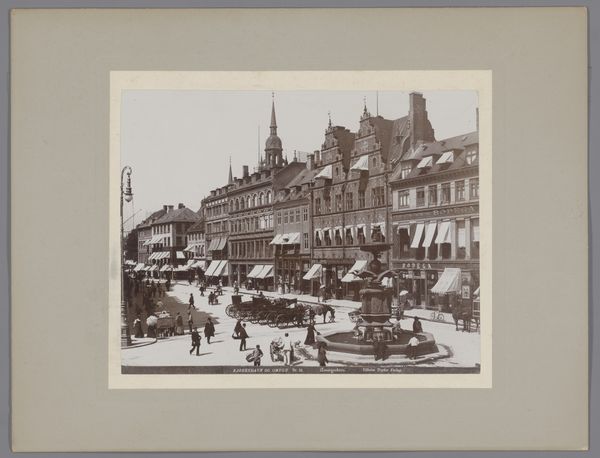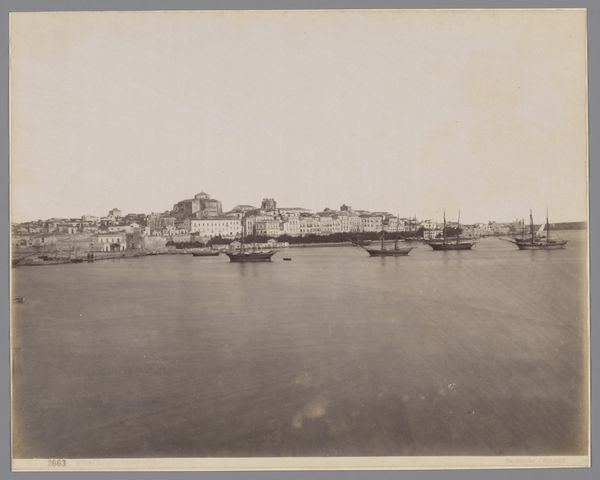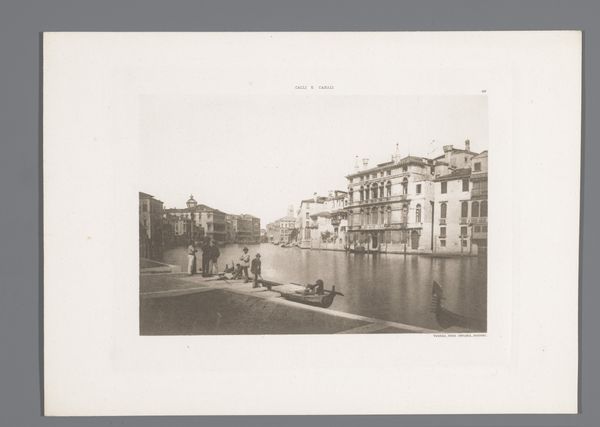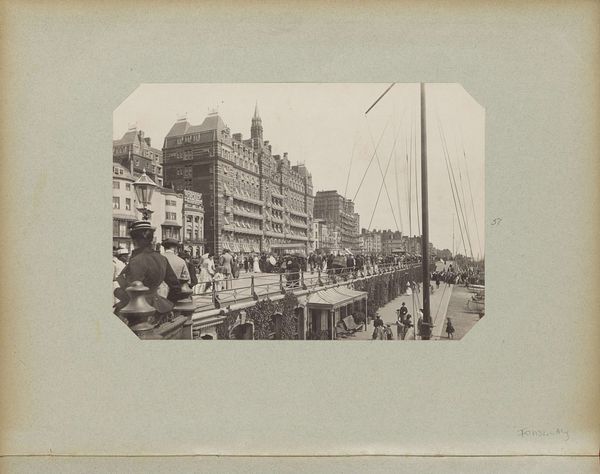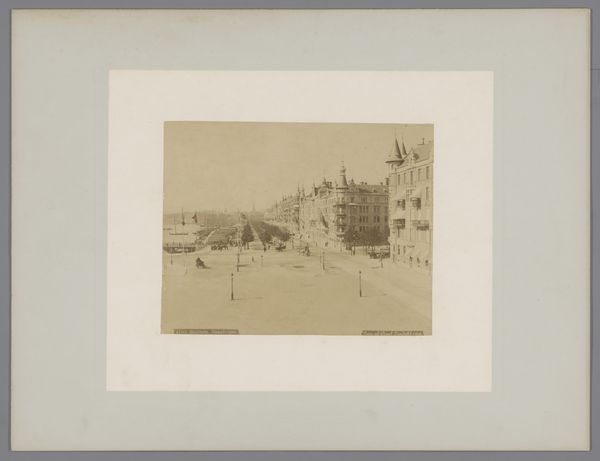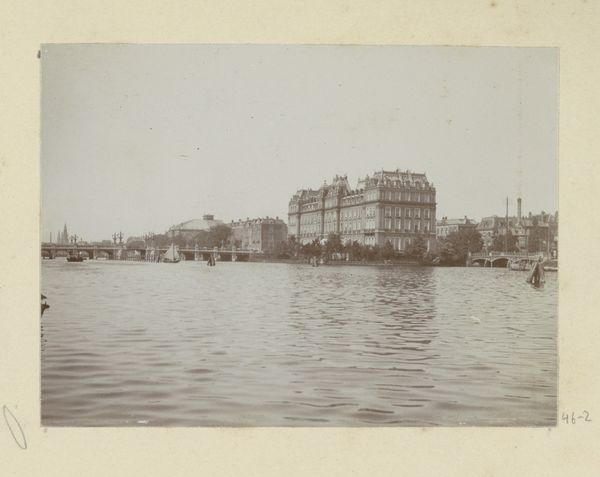
Dimensions: height 197 mm, width 250 mm, height 275 mm, width 364 mm
Copyright: Rijks Museum: Open Domain
Editor: This photograph, "Gezicht op de Riva degli Schiavoni te Venetië," taken by Paolo Salviati sometime between 1860 and 1870, captures a view of Venice. It's a gelatin-silver print. It strikes me as meticulously composed, yet serene. What do you see in this piece, looking at it from a materialist perspective? Curator: Well, first, consider the materials. A gelatin-silver print points to a particular process of industrial production. What kind of labor was involved in its making? Who was handling the chemicals, and what social class did they belong to? Was it a collaborative project? Editor: That's interesting. I hadn't considered the division of labor behind it. Do you think the choice of photography over painting reveals anything about social changes? Curator: Absolutely. Photography at this time, still relatively new, democratized image-making to a degree. Painting was exclusive. How does the circulation of photographic prints, souvenirs of Venice like this, impact Venetian culture itself? Editor: So, the act of capturing Venice became more accessible, leading to widespread consumption of its image. Curator: Precisely. The rise of photographic tourism went hand-in-hand with industrial advances. Who was consuming these images? And what impact did this have on local crafts and industries within Venice itself? We need to consider that materiality isn't just about the artwork, but also the economic web in which it was caught. Editor: I never thought about it that way, the ripple effect on Venetian life because of this easily produced photograph. Curator: It reminds us that even a beautiful view is steeped in social context and the modes of production, always affecting human labour, technology, and consumer habits.
Comments
No comments
Be the first to comment and join the conversation on the ultimate creative platform.
